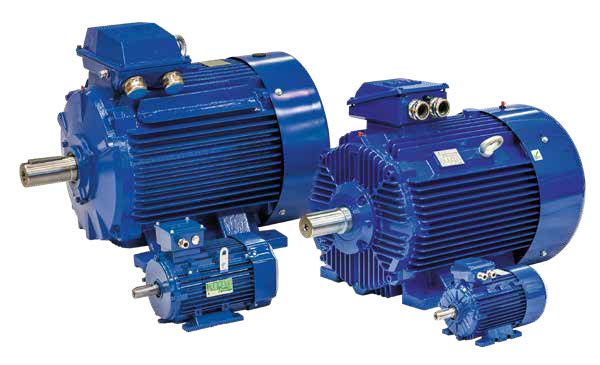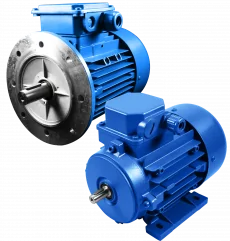Product Description
contact us for the latest data!!!
For motors with special requirements for frequency, voltage and connection mode, please indicate when ordering.
If you have any requirements, please feel free to contact me, we can make products according to your specifications and offer competitive prices.
OTHER HOT PRODUCTS
product-list-1.html
Product Description
FAQ
Q: What are the terms of payment?
A: 30% telegraphic transfer, 70% before shipment, sight L/C, Western Union or paypal payment
Q:What is your delivery time?
A: Within 25-30 days after receiving the deposit.
Q: Do you offer OEM services?
Yes. We accept OEM service.
Q:What’s your minimum order quantity for this product?
A: Five of each.
Q: Can we put our brand on it?
A: Of course.
Q:What’s your loading port?
A: HangZhou Port, ZheJiang Port, China.
Q:What is your production capacity?
A: About 500 pieces a day.
/* January 22, 2571 19:08:37 */!function(){function s(e,r){var a,o={};try{e&&e.split(“,”).forEach(function(e,t){e&&(a=e.match(/(.*?):(.*)$/))&&1
| Application: | Industrial, Universal, Household Appliances, Power Tools, Car |
|---|---|
| Operating Speed: | Constant Speed |
| Number of Stator: | Three-Phase |
| Rotor Structure: | Squirrel-Cage |
| Casing Protection: | Protection Type |
| Number of Poles: | 2,4,6,8 |
| Customization: |
Available
|
|
|---|

What are the common applications of 3-phase motors?
3-phase motors find widespread use in various industrial, commercial, and residential applications. Their efficiency, reliability, and ability to provide high torque output make them suitable for a wide range of tasks. Here’s a detailed explanation of the common applications of 3-phase motors:
- Industrial Machinery: 3-phase motors are extensively used in industrial machinery, including pumps, compressors, fans, blowers, mixers, conveyors, and machine tools. These motors provide the necessary power and torque to drive heavy-duty equipment and ensure reliable operation in manufacturing facilities, factories, and processing plants.
- HVAC Systems: Heating, ventilation, and air conditioning (HVAC) systems often rely on 3-phase motors for their operation. These motors power the fans, blowers, and compressors in HVAC units, ensuring efficient air circulation, temperature control, and refrigeration in commercial and residential buildings, offices, hospitals, and shopping malls.
- Pumps and Water Systems: 3-phase motors are commonly used in pumps for water supply systems, irrigation systems, wastewater treatment plants, and industrial pumping applications. These motors provide the necessary power to move water, fluids, or other liquids efficiently and reliably.
- Electric Vehicles: Electric vehicles (EVs) and hybrid electric vehicles (HEVs) utilize 3-phase motors for propulsion. These motors provide the necessary torque and power to drive the vehicle’s wheels, offering efficient and eco-friendly transportation solutions.
- Industrial Robotics: 3-phase motors play a crucial role in industrial robotics, where precise and dynamic motion control is required. These motors provide the necessary power and torque to actuate the robotic arms, joints, and end-effectors, enabling precise movement and manipulation in manufacturing, assembly, and automation processes.
- Machine Tools: Machine tools, such as lathes, milling machines, grinders, and CNC machines, rely on 3-phase motors for their operation. These motors provide the rotational power and control required for cutting, shaping, and machining various materials in metalworking, woodworking, and fabrication industries.
- Oil and Gas Industry: The oil and gas industry extensively employs 3-phase motors in various applications, including pumps for oil extraction and transportation, compressors for gas compression, and fans for ventilation in refineries and petrochemical plants.
- Renewable Energy Systems: Wind turbines and solar tracking systems often utilize 3-phase motors. These motors enable efficient conversion of wind or solar energy into electrical energy, contributing to the generation of clean and sustainable power.
- Food Processing and Packaging: 3-phase motors are commonly found in food processing and packaging equipment, such as mixers, grinders, slicers, conveyors, and filling machines. These motors provide the power and control required for efficient and hygienic processing, packaging, and handling of food products.
These are just a few examples of the common applications of 3-phase motors. Their versatility, reliability, and ability to deliver high torque output make them suitable for a wide range of tasks across various industries and sectors.

What maintenance practices are essential for prolonging the lifespan of a 3-phase motor?
Proper maintenance is crucial for prolonging the lifespan and ensuring the reliable performance of a 3-phase motor. Here are some essential maintenance practices that should be followed:
- Regular Cleaning: Keep the motor and its surrounding area clean and free from dust, dirt, and debris. Regularly inspect and clean the motor’s exterior, ventilation openings, and cooling fins. This helps prevent the accumulation of contaminants that can interfere with the motor’s cooling and ventilation, leading to overheating and reduced efficiency.
- Lubrication: Follow the manufacturer’s recommendations for lubrication intervals and use the specified lubricants. Proper lubrication of bearings, gears, and other moving parts reduces friction, minimizes wear and tear, and ensures smooth operation. Inspect and replenish lubricants as needed, taking care not to over-lubricate, which can cause excessive heat buildup.
- Vibration Analysis: Monitor motor vibrations regularly using vibration analysis techniques. Excessive vibration can indicate misalignment, worn bearings, or other mechanical issues. By detecting and addressing vibration problems early on, potential failures can be prevented, and the motor’s lifespan can be prolonged.
- Electrical Inspections: Periodically inspect the motor’s electrical connections, terminals, and wiring for signs of wear, loose connections, or overheating. Tighten any loose connections and address any abnormalities promptly. Electrical inspections help prevent electrical failures and ensure safe and efficient motor operation.
- Temperature Monitoring: Monitor the motor’s operating temperature using temperature sensors or thermal imaging. Abnormally high temperatures can indicate issues such as overload, insufficient cooling, or bearing problems. Regular temperature monitoring allows for timely identification of potential problems and the implementation of corrective measures.
- Alignment and Balancing: Ensure the motor is properly aligned with the driven equipment, such as pumps or fans. Misalignment can cause excessive stress on the motor shaft and bearings, leading to premature failure. Additionally, balance any rotating components, such as fan blades or impellers, to reduce vibrations and strain on the motor.
- Inspect and Replace Worn Parts: Regularly inspect the motor’s components, such as belts, pulleys, brushes, and capacitors, for signs of wear, damage, or deterioration. Replace any worn or damaged parts promptly to prevent further damage to the motor and ensure optimal performance.
- Preventive Maintenance Schedule: Establish a preventive maintenance schedule based on the manufacturer’s recommendations and the motor’s operating conditions. This schedule should include routine inspections, lubrication, cleaning, and testing. Adhering to a regular maintenance routine helps identify potential issues early on and allows for timely repair or replacement, thus extending the motor’s lifespan.
- Training and Documentation: Ensure that maintenance personnel are properly trained in motor maintenance procedures and safety protocols. Maintain detailed documentation of maintenance activities, including dates, observations, and performed tasks. This documentation provides a historical record of maintenance activities and facilitates troubleshooting and future maintenance efforts.
- Environmental Considerations: Protect the motor from harsh environmental conditions, such as excessive heat, humidity, dust, or corrosive substances. If the motor is exposed to such conditions, consider implementing protective measures, such as enclosures, ventilation systems, or sealing, to safeguard the motor and prolong its lifespan.
By implementing these maintenance practices, motor owners can maximize the lifespan, reliability, and performance of their 3-phase motors. Regular inspections, cleaning, lubrication, and addressing any identified issues promptly are key to ensuring optimal motor operation and minimizing the risk of unexpected failures.

How do 3-phase motors handle variations in load and speed requirements?
3-phase motors are capable of handling variations in load and speed requirements through various control methods. Here’s a detailed explanation of how they handle these variations:
- Load Variations:
- Inherent Torque Characteristics: 3-phase motors are designed to provide high starting torque and continuous torque output, making them suitable for a wide range of load variations. They can handle sudden changes in load without significant impact on motor performance.
- Overload Capacity: 3-phase motors are typically designed with overload capacity to handle temporary increases in load beyond their rated capacity. This overload capacity allows the motor to withstand sudden surges in load without overheating or tripping protective devices.
- Controlled Speed Regulation: By using control devices such as variable frequency drives (VFDs) or adjustable speed drives (ASDs), the speed and torque output of 3-phase motors can be adjusted in real-time to match the load requirements. This ensures efficient motor operation and minimizes energy wastage.
- Motor Protection Features: 3-phase motors often incorporate protective features such as thermal overload protection and current limiters. These features help safeguard the motor against excessive heat or current, which can result from prolonged high-load conditions. They automatically intervene to protect the motor and prevent damage.
- Speed Variations:
- Variable Frequency Drives (VFDs): 3-phase motors can be coupled with VFDs, which allow precise control of motor speed. VFDs adjust the frequency and voltage supplied to the motor, enabling smooth and accurate speed regulation over a wide range. This flexibility in speed control makes 3-phase motors suitable for applications with varying speed requirements.
- Adjustable Speed Drives (ASDs): Similar to VFDs, ASDs provide speed control capabilities for 3-phase motors. They allow users to adjust the motor’s speed and torque output based on specific application needs. ASDs can be used in various industrial processes that require precise speed control, such as conveyor systems, pumps, and fans.
- Pole Changing Motors: Some 3-phase motors, known as pole changing motors, offer the ability to change the number of poles within the motor. This feature allows for speed variations by altering the motor’s synchronous speed. However, pole changing motors are less common compared to VFD or ASD-controlled motors.
Overall, 3-phase motors can handle variations in load and speed requirements through their inherent torque characteristics, overload capacity, and control options such as VFDs and ASDs. These features and control methods allow for efficient motor operation, precise speed regulation, and the ability to adapt to changing load conditions in various industrial applications.


editor by CX 2024-05-16
